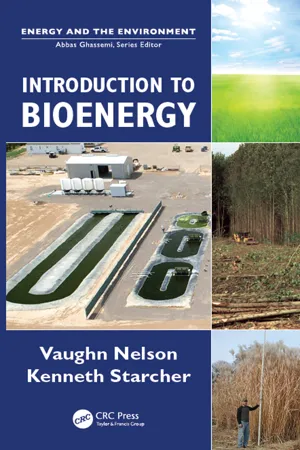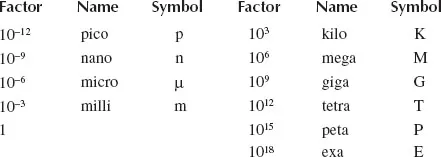![]()
The conversion of solar energy by the fundamental process of photosynthesis is the basis for life. Photosynthesis primarily converts carbon dioxide and water to carbohydrates and oxygen and then the heterotrophs consume the primary producers to sustain their lives, through the food chain or food web. Algae, plants, and bacteria in the ocean generate about the same amount of carbohydrates and oxygen as the land plants, due to the high productivity of algae. Chemoautotrophic bacteria are not dependent on photosynthesis as they obtain their energy from chemical reactions, and they are not important for the production and consumption of bioenergy. These bacteria are the primary source of the food chain in vents in the deep oceans, a significant scientific discovery.
Of course, humans at the top of the food chain are also dependent on biomass for fiber, wood, and energy. In terms of the mass of the Earth, the thin layer of biomass is inconsequential, but it is significant in the regulation of the atmosphere and temperature of the Earth. There are three aspects for biomass: overall biomass (which is essentially steady state; growth, storage, decay), production/consumption of food and fiber and bioenergy. Since dry biomass is mainly carbon, the processes and exchanges (carbon cycle) for the biosphere can be counted in terms of the mass of carbon.
1.1 NUMBERS
Students and those interested in data analysis, estimation of energy production, and the problems are expected to understand elementary math, be able to use spreadsheets, and to estimate or calculate quantities using formulas. You must remember that many of the quantities (e.g., in the next section on the carbon cycle) are estimates. Some rough estimates may differ by a factor of 10 or more and you need to refer to the scientific and technical literature for the range or error in the data. Most data have units and we will use the International System of Units (SI) and for some cases English units will be in parenthesis. Tons in this book are metric tons (1000 kg), so be careful to note in the literature whether they are using metric ton, short ton (2000 lbs), or long ton (2400 lbs).
We will use exponents to indicate large and small numbers. The exponent indicates how many times the number is multiplied by itself, or how many places the decimal point needs to be moved. Powers of 10 will be very useful in order of magnitude problems, which are rough estimates.
For large and small numbers, we will use powers of 10 and/or prefixes of powers of 1000.
Note: There is a discrepancy between the use of billions in the United States (109) and England (1012).
In terms of consumption, production, supply, and demand, estimates are needed and in many cases an order of magnitude (OM) calculation will suffice. By order of magnitude, we mean an answer (one significant or at most two significant digits) to a power of 10. For problems and estimations, the answers cannot be more accurate than the least accurate data input, so significant digits must be used. More information on exponents, OM calculations, significant digits, and steps for solving problems and presenting results is presented in Appendix A1, Mathematics.
1.2 CARBON CYCLE
The carbon cycle of the Earth (Figure 1.1) is the biochemical exchange between the major reservoirs: atmosphere, biosphere, soil (pedosphere), ocean, burial in sediments (source of fossil fuels), and crust (lithosphere, stored carbon in limestone, and rocks). The exchange between the reservoirs is fairly balanced, however, the rates differ. Humans are increasing the amount of carbon dioxide in the atmosphere in real time; however, the balance rate is hundreds of years between the atmosphere and the oceans. There have been changes of CO2 in the atmosphere due to volcanic activity, temperature of the atmosphere, and of course now the impact of humans due to the burning of fossil fuels, deforestation and agriculture practices, and production of cement. Volcanoes may cause brief cooling due to sulfur dioxide and other particle emissions, which reflect more sunlight, however, the sulfur dioxide lasts only a few years in the atmosphere.
The ocean [1] contains a large reservoir of carbon (38,000 Gt) followed by fossil fuels (1500 Gt), the atmosphere (730 Gt), and crust (100 Pt, limestone is calcium carbonate, CaCO3), however, the exchange rate between the atmosphere and the ocean is low (2 Gt/yr) and the burial rate in sediments is smaller (0.2 Gt/yr). The net transport of carbon into the ocean is around 1.4 Gt/yr. The carbon production due to human activity is around 9 Gt/yr, with combustion of fossil fuels at 7 Gt/yr and deforestation at 2 Gt/yr. The total carbon sink is around 5 Gt/yr due to photosynthesis and soils (30%), the oceans (25%), and sediments and rocks (<1%), which leaves the difference of 4 Gt/yr in the atmosphere. So, humans are affecting the carbon cycle, and since there is not enough increase in the carbon sinks of biomass and oceans, there is an increase of carbon dioxide, a greenhouse gas, in the atmosphere. Note that the ratio of carbon dioxide to carbon is 3.66, and so an emission of 1000 tons of CO2 is equivalent to adding 366 tons of C to the atmosphere.
FIGURE 1.1 Carbon cycle. Note: Crust reservoir contains 100 Pt. (Adapted from Oak Ridge National Laboratory, https://public.ornl.gov/site/gallery/originals/BioComponents_Carbon.webp.)
1.3 CLIMATE CHANGE
Climate change is now the common term since it does not have the same negative or political impact as global warming. Some in industry and some politicians deny that there is global warming and some accept that there is climate change but deny that it is due to humans [2]. Industry maintains that we cannot reduce the production of CO2 because of economics and because the science for CO2 and global warming is not completely certain. Remember that the same comments were said about the ozone problem and addiction to tobacco. A well-funded campaign to deny global warming and to deny that humans are part of the problem has impacted public opinion and the political process as the number of Americans skeptical of global warming increased from 12% in 2001 to 28% in 2010 (25% in 2014).
The U.S. policy under the G.W. Bush administration was in sharp disagreement with that of the other industrialized countries, and the reasons were that it would cost too much and not enough provisions were made to curtail future emissions from developing countries. An interesting comment by Robert Romer [3] in 1976 was that “human activities do not now have a large effect on the global climate, however, this calculation should not be considered as justification for complacency.” So, within 40 years we are doing an uncontrolled experiment on the atmosphere of the Earth, and now most predictions on global warming and climate change are for problems by 2050–2100 and maybe even catastrophe in the next century unless carbon dioxide emissions to the atmosphere are reduced to 1990 levels. In the United States, the proposed regulations (2014) by the Environmental Projection Agency on emission of carbon dioxide are strongly opposed, especially by the coal industry.
For meteorologists, climate refers to the average of 30 or more years. Of course, the climate has and will change, for example, there was the snowball earth and the very warm ear...


